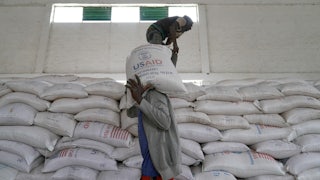In recent weeks, former President Donald Trump and Senator J.D. Vance have been on a rampage, spreading egregious lies that would exhaust even the most seasoned fact-checker. From imaginary pet-eating immigrants to schools secretly performing gender-affirming surgeries on children, their lies aren’t just garden-variety political spin—they’re weaponized fiction aimed at manipulating public discourse. The kicker? In a lot of cases, the media, wittingly or not, is playing right into their hands.
Take Trump’s wild claim at the recent Moms for Liberty conference that schools are facilitating gender-transition surgeries without parental consent. “Your kid goes to school and comes home a few days later with an operation,” he declared, as if schools have secret operating rooms next to the gymnasium. CNN’s Daniel Dale—who does a great job—debunked this, noting that Trump’s campaign couldn’t provide a single example to substantiate the claim. Even conservative organizations couldn’t back him up, though some, like Thomas Jipping of the Heritage Foundation, tried to defend Trump’s remarks by suggesting that if you “just change a couple words,” his point becomes valid. That’s like saying if you squint hard enough, a circle becomes a square.
Then there’s the appalling narrative about Haitian immigrants in Springfield, Ohio. Both Trump and Vance have been perpetuating the baseless story that these immigrants are stealing and eating people’s pets. Vance even doubled down on CNN, admitting to Dana Bash that he might have to “create stories so that the American media actually pays attention” to issues he deems important. In other words, the ends justify the means—even if the means involve stoking xenophobia and inciting potential violence.
This strategy isn’t new for Trump. Remember the birther movement? For years, he pushed the lie that President Barack Obama wasn’t born in the United States, a lie that was thoroughly debunked yet managed to sow division and doubt. It’s a tried-and-true tactic: Throw out a sensational lie, watch the media frenzy, and steer the national conversation where you want it.
But here’s where the media’s role becomes crucial—and complicated. By focusing on debunking the lies themselves, outlets can inadvertently help the liars. As Jamison Foser aptly puts it in a recent article in his Finding Gravity newsletter, one common media approach “privileges the lie.” The media ends up centering their coverage around the falsehoods, thus keeping the liars’ preferred topics in the spotlight. Foser argues that journalists should instead focus on what these lies reveal about the character and intentions of the liars.
For example, as Foser writes, The New York Times ran 10 articles in five days largely about the false pet-eating claims. While they did a great job labeling the statements as false, the volume of coverage kept immigration—a topic Trump and Vance want front and center—dominating the news cycle. As Foser notes, “Even articles debunking Trump’s lies privilege them, centering his preferred campaign themes.”
So, what’s the alternative? Foser suggests that the press should shift the focus from the content of the lies to the liars themselves. Highlight the dangerous implications of politicians willing to fabricate stories to manipulate public opinion. Examine the motives behind these falsehoods. Are they distracting from policy failures? Inciting a base that thrives on fear and division? These are the questions that need answers.
Consider the real-world consequences of these lies. In Springfield, the false narrative about Haitian immigrants led to bomb threats against schools and city offices. Republican Mayor Rob Rue expressed his frustration, stating that national politicians “mischaracterize what is actually going on and misrepresent our community.” Ohio Governor Mike DeWine, also a Republican, labeled the pet-eating claims as “garbage.” Yet Trump and Vance remain undeterred, continuing to spread misinformation without a shred of evidence.
This isn’t just about setting the record straight; it’s about preventing the harm that can result from such reckless rhetoric. When politicians invent stories that dehumanize entire groups, they’re not just lying—they’re endangering lives.
Historically, Trump’s pattern of lies has been well documented. His false claims about widespread voter fraud in the 2020 election culminated in the January 6 insurrection, a great example of how dangerous his lies can be. The “birther” conspiracy wasn’t just a smear against President Obama; it was a racist attack that sought to undermine the legitimacy of the first Black president.
The media must learn from these past missteps. Instead of serving as a megaphone for lies, journalists should adopt a different framework for reporting on them. As Foser suggests, “When Donald Trump lies … that should be the hook for an article about Donald Trump’s long history of lying; about the fundamental lack of honesty, character, and integrity that this demonstrates.”
It’s not about ignoring the lies but about refusing to let them dictate the narrative. News outlets have the power—and the responsibility—to shape public discourse. They can choose to hold liars accountable, focusing on the integrity (or lack thereof) of those who seek to lead. This doesn’t mean abandoning objectivity; it means recognizing that neutrality doesn’t require naïveté.






